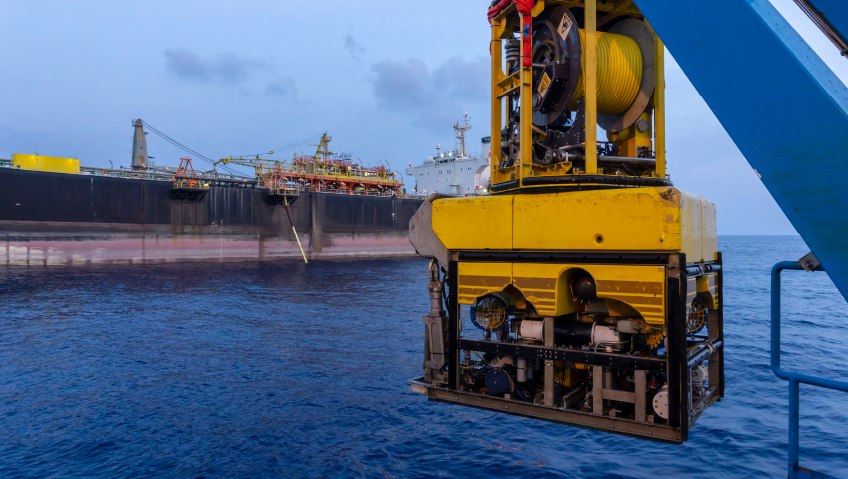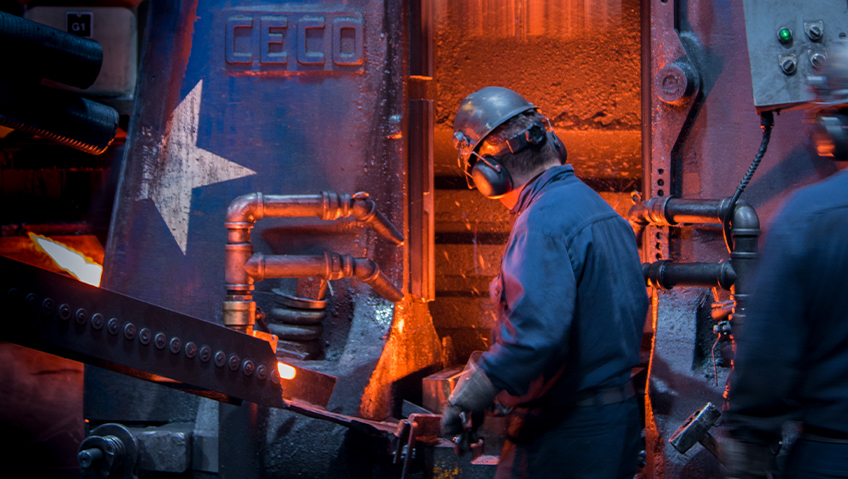Autonomous underwater vehicles, or AUVs, are a type of robotic machine that travels under bodies of water or ice for various purposes with no direct input from a human operator. The vehicles are part of a larger group of technology and systems generally referred to as unmanned underwater vehicles, a category that also includes its counterpart, Remote-Operated Vehicles (ROV).
The first AUV was developed as early as 1957 at the University of Washington by Stan Murphy, Bob Francois, and Terry Ewart. The vehicle, called Special Purpose Underwater Research Vehicle (SPURV), was used for basic research into underwater diffusion, acoustic transmission, and the wakes of submarines.
Another prototype was developed at the university, Unmanned Arctic Submersible (UARS), meant for military exploration under ice. AUVs continued to be developed in both America and the Soviet Union over the years and the development and advancement of them is now an industry unto itself.
The National Oceanic and Atmospheric Administration (NOAA) Office of Ocean Exploration and Research fully defines an AUV as an underwater vehicle that carries its power onboard. This power enables its propellers or thrusters to move it through the water and is necessary for it operate its sensors. Most AUVs use specialized batteries, although different models have used fuel cells or even rechargeable solar power; other types of AUVs, like gliders, minimize energy demands by allowing gravity and buoyancy to propel it.
AUVs are seen as particularly attractive options for ocean-based research because they can reach shallow water areas than most boats cannot, and deeper water than either human divers or tethered vehicles can achieve. Once deployed and underwater, the vehicles are safe from inclement weather and can stay underwater for extended periods of time. They are also modular, meaning that the user can choose which sensor to attach depending on the objectives of research or its intended use; for example, estimates of a vehicle’s acceleration and velocity while underwater can be calculated with an additional Inertial Measurement Unit or even improved with a Doppler Velocity Log. AUVs are seen as a less expensive option that a typical research vessel but with the added advantage of being able to complete identical repeat surveys of an area.
The Schmidt Ocean Institute further notes the advantage of AUVs over ROVs in that the former are small and easily portable, boast a greater capability for speed, mobility, and spatial range and, in not being tethered to a ship, are able to improve data collection rates.
Organizations like the Woods Hole Oceanographic Institution keep track of the various types of AUV and the uses that each one has. For example, the REMUS vehicle is designed for coastal monitoring as well as survey operations at various ocean depths, the Mesobot studies life in the ocean’s mid-water or twilight zone, and vehicles like the Slocum glider and the SENTRY can dive down thousands of feet in the ocean for exploration and research purposes.
Organizations like the Monterey Bay Aquarium Research Institute (MBARI) began developing unmanned and un-tethered underwater vehicles to remove the high cost of personnel incurred when taking scientific samples of the ocean. AUVs have a lower cost when compared to other types of ships, which is especially helpful as the vehicles generally see a demand for diverse payloads. MBARI created a modular vehicle that can be quickly reconfigured to host many different loads without modifying its base components.
An AUV is typically programmed on the surface to navigate the water on its own, at which point it can measure the physical characteristics of the water to detect chlorophyll levels, measure the concentrations of small particles in the water, and collect images of the sea floor.
A multitude of industries utilize AUV technology today for various applications beyond scientific research. In the workspace, oil and gas industries are a prime investor in the technology as it can be used to make detailed seafloor maps, an important step in the installation of undersea pipelines. Survey companies can also use it for the inspection of pipelines and of other underwater structures. The vehicles can also be used by a multitude of sectors in the study of lakes, oceans, and the ocean floor itself. It is a prime tool for specific and difficult tasks in oceanographic research, such as for the determination of the concentration of various elements or compounds and the presence of microscopic life in bodies of water. Military and disaster relief usages are also possible, as the US military often calls on the technology for unmanned surveillance and reconnaissance missions, as well as for warfare, countermeasures, and more. Finally, certain investors have been known to utilise the technology for hobbyist purposes.
In a market research report, IBISWorld reports that the biggest supporters of AUV usage are the oil and gas markets and the US military. The AUV manufacturing industry is a relatively young one but did not record its first sale until 1985. The report continues: “Over the five years to 2020, IBISWorld estimates that industry revenue has increased at an annualized rate of 26.5 percent to $885.4 million. This includes projected growth of 24.4 percent in 2020. Fortunately, because much of industry revenue is already earmarked each fiscal year by the US government, the industry is likely to escape a windfall in revenue…” Modern AUV suppliers include companies such as Teledyne Marine, RJE Oceanbotics, RTSYS, Blue Robotics, and more. Many companies that invest in and offer AUV services are private companies with a global reach, although a majority are US-based.
In a paper on the pros and cons of using AUVs as research vessels, Paul G. Fernandes, Pete Stevenson, and Andrew S. Brierly note the optimal size of an AUV (“torpedo-shaped… 2-10 m in length and 0.2-1.3 m in diameter”) in researching undersea and icy conditions as well as the lack of noise generated and the low cost of operation. However, the vehicles generally sport limited range due in part to the power it is required to operate on. “Given that an AUV has been designed to have low drag and efficient propulsion, the range is entirely dependent on the quantity (size) and quality of the power source which currently dominates the vehicle volume.”
Lithium ion and silver zinc cells are purported by the three to be the most cost-effective and useful options for power but require a significant investment on the part of the buyer and the manufacturer. Weight distribution is an important consideration in the design of an AUV and battery options like that of a manganese alkaline battery can affect the cost-effectiveness of an operating AUV, despite being a cheaper option. In addition, the Schmidt Ocean Institute notes that, in not being tethered like an ROV, an AUV may not be able to draw as much power nor communicate real-time data. AUVs are also able to be influenced by strong currents and are not suitable for areas that are heavily populated by undersea life due to acoustic interference and the risk of collision or entanglement.
An infographic by IEEE (Institute of Electrical and Electronics Engineers) Spectrum explains that future builds of AUVs will likely be stationed on the sea floor housed in a battery compartment that will charge it and allow it to process and send information topside, an alternative to the ongoing power issue most vehicles face. High-speed communications from the vehicle to base could be maintained through a fibre optic cable manufactured to break easily at resistance, necessitating the return of the AUV to its departure point.
Future AUVs will also likely use sonar, lidar, and camera systems to mitigate ongoing issues of navigating the tumultuous ocean depths. The demand for AUV technology has slowly but steadily increased since its mass introduction in the 1980s and its diverse uses across myriad industries promises that the technology will continue to progress and remain in demand for the foreseeable future.






